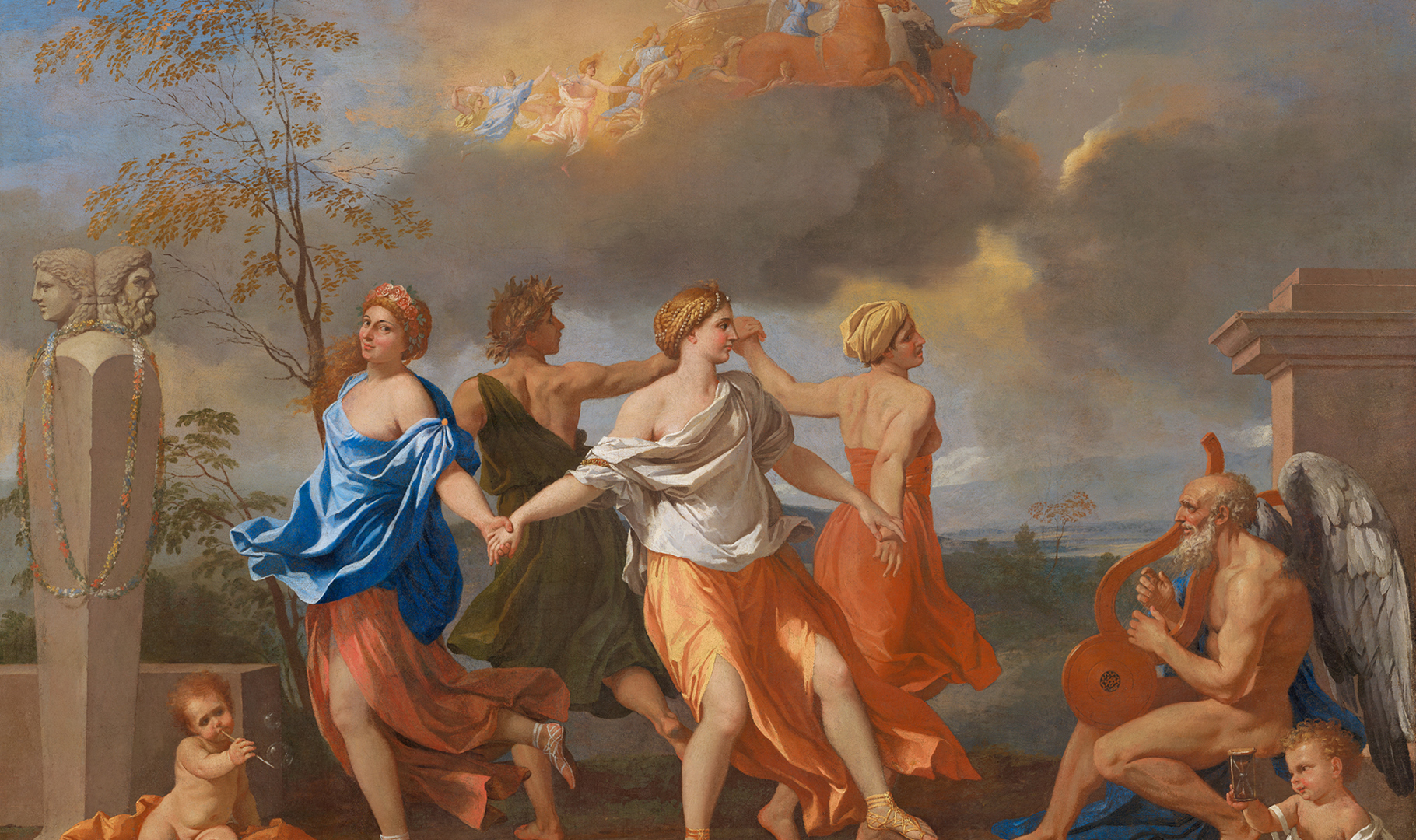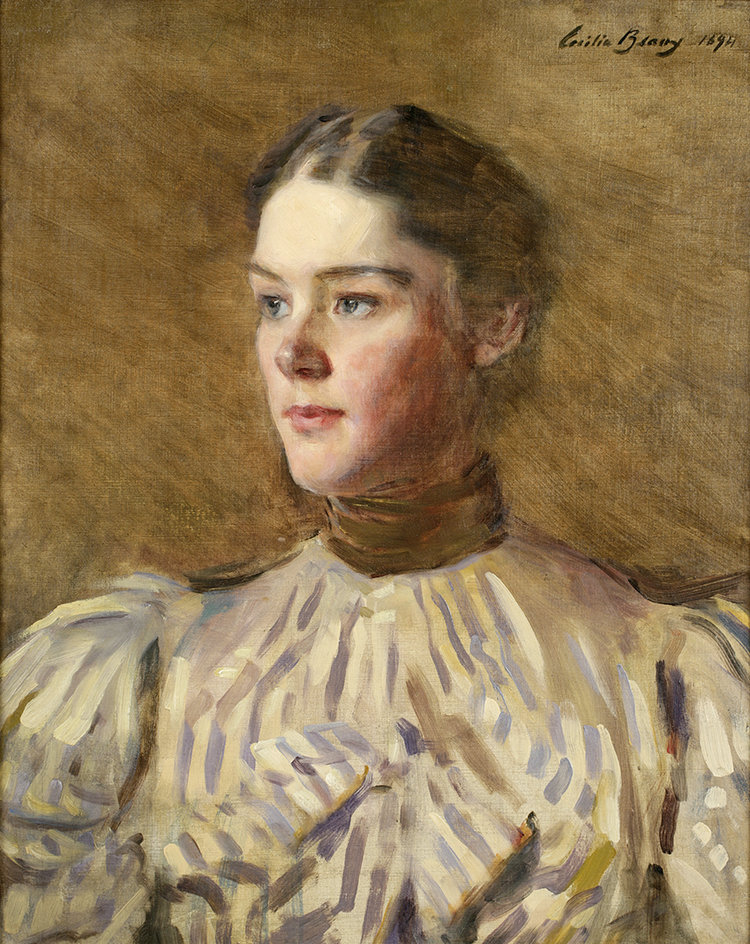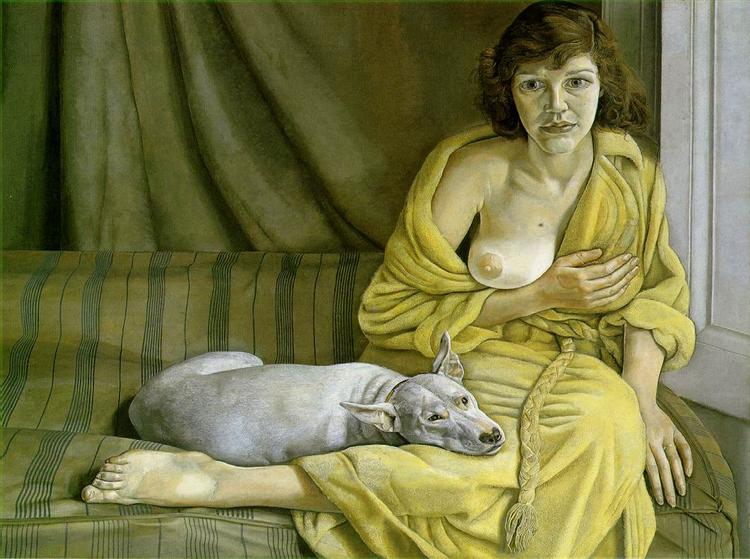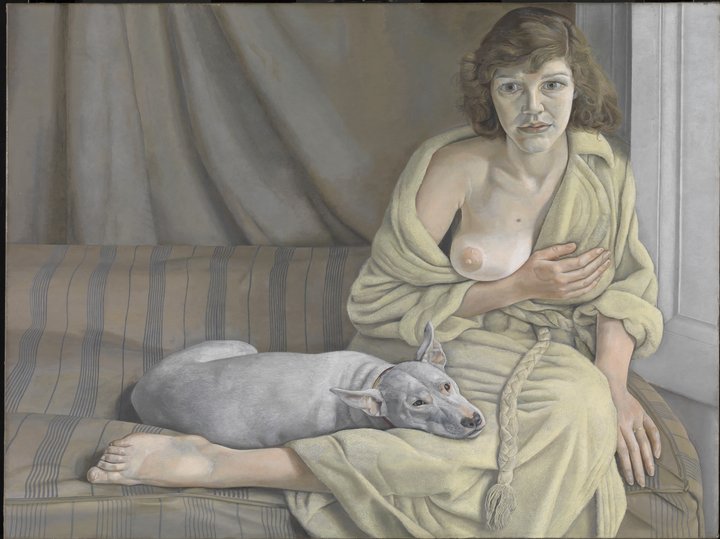Clark Art Institute
July 17 through October 3, 2021
Drawing from its extensive holdings of works by—and inspired by—Albrecht Dürer, the Clark presents Dürer & After, on view July 17 through October 3, 2021. Original prints appear alongside faithful imitations and freer interpretations by artists including Israhel van Meckenem the Younger, Marcantonio Raimondi, Hieronymus Hopfer, and Jan Wierix, offering a unique opportunity to assess Dürer’s centuries-long artistic legacy.
“Albrecht Dürer’s mastery is unquestioned. While it’s a delight to study his exceptional prints, the opportunity to look at these works through a different lens—that of his influence on other artists—helps us to appreciate Dürer anew,” said Olivier Meslay, Hardymon Director of the Clark. “It has been more than ten years since we last showed Dürer’s prints in our galleries, and we look forward to sharing a wide selection of them with our visitors. He will always surprise you—you will always find something new in Dürer’s work.”
Until well into the fifteenth century, printmaking in Europe was regarded not as an art form but as a utilitarian method of replicating and circulating imagery. A portable medium that served equally well for devotional images as for playing cards, prints were valued above all as carriers of visual information, to be used and eventually discarded rather than admired and preserved. That began to change with the Nuremberg-born artist Albrecht Dürer (1471–1528). Revered for his technical virtuosity, rich pictorial imagination, and vast production across print media, Dürer was one of the first European artists whose prints garnered appreciation as art. The bold AD monogram that adorns much of his work asserts not just the crafting of a printable surface but also the authorship of a visual idea, “the likes of which,” in his famous phrase, was “never before seen nor thought of by any other man.” Dürer’s prints, whose aesthetic and intellectual qualities delighted collectors, also inspired numerous imitators during his lifetime and long afterward. From strict copies to free interpretations, these “after-Dürers” reflect a range of motives. While many imitators copied in the spirit of learning from or paying homage to his brilliant art, others sought to deceive or profit by sowing confusion around an image’s true authorship.
“We are extremely fortunate to have deep holdings of Dürer’s works in the Clark’s collection, and it’s exciting to be able to show a range of prints from across his career in this exhibition,” said Anne Leonard, Manton Curator of Prints, Drawings, and Photographs. “Considering his original works alongside those of both his devoted copyists and his more unscrupulous imitators gives us a fascinating opportunity to trace Dürer’s lasting influence. Centuries afterward, his technical ability and brilliant imagination continue to reach across the centuries to captivate modern-day viewers and inspire new generations of artists.”
Sterling and Francine Clark’s original collection included few German prints, but in 1968 the Institute acquired a renowned collection of 243 Dürer prints amassed by Tomás Harris as well as a second group purchased from the Museum of Fine Arts, Boston. Before the Harris acquisition, the Clark already owned a significant number of copies “after Dürer,” which, though they command less value on the art market, tend to be rarer than originals. Far from being rendered irrelevant by so-called autograph prints, these replicas, imitations, and adaptations speak eloquently to Dürer’s legacy. In this exhibition, originals and copies are grouped together to reveal the complex afterlife of some of his most celebrated images.
Dürer & After is presented in the Eugene V. Thaw Gallery for Works on Paper. This exhibition is organized by the Clark Art Institute and curated by Anne Leonard, Manton Curator of Prints, Drawings, and Photographs. Generous support for this exhibition is provided by Denise Littlefield Sobel.
ABOUT THE EXHIBITION
The more than forty works on view span Dürer’s career and include examples by a range of copyists both known and anonymous: from early virtuoso engravings such as Four Nude Women (1497), Saint Eustace (c. 1501), and Adam and Eve (1504), to the woodcut Life of the Virgin (1500–1504) famously copied by Marcantonio Raimondi in Venice, to the eight-part series of large-scale woodcuts for Emperor Maximilian I known as The Great Triumphal Chariot (1522), and finally to the celebrated trio of Meisterstiche considered Dürer’s supreme achievements in the print medium: Knight, Death, and the Devil (1513), Saint Jerome in His Study (1514), and Melencolia I (1514). In addition to specific questions of connoisseurship, the larger motivations for copying Dürer’s models are explored.
Imitations
Four Nude Women (1497), one of Dürer’s earliest signed engravings, is presented in a rare lifetime impression. It is sometimes called Four Witches, as if the figures standing in a circle were enacting a mysterious ritual such as casting a love spell beneath the fruit of a mandrake. Resonance with the Three Graces of classical mythology has also been noted, though the letters “O.G.H.” on the print remain enigmatic. The copper plate engraved by Israhel van Meckenem one year later is extremely rare, as most metal matrices from this period were melted down for other uses. Van Meckenem traced his design from an impression of Dürer’s print and engraved directly onto the plate, resulting in a reversed orientation. His industrious copying of Dürer’s works under his own signature marks the emergence of print collecting and anticipates the surge of entrepreneurial publishing half a century later.
Dürer considered Saint Eustace (c. 1501) a showpiece, presenting it on six occasions while in the Netherlands in 1521. Part of the stunning achievement of the print stems from the challenge of achieving an even pressure across the entire inked surface of so large a plate. Amidst a profusely detailed representation of nature, the print’s subject is the Christian conversion of the pagan Eustace, who, on a hunt, has a vision of Christ on the cross. The etched version by Hieronymus Hopfer lacks Dürer’s monogram and is inscribed with the printmaker’s own name, indicating no intent to deceive buyers. Based in Augsburg, Hieronymus worked with his father, Daniel, and his brother, Lambrecht, to reproduce woodcut and engraved designs in the newer medium of etching. The Clark’s impression of Hopfer’s Saint Eustace, made from a very worn plate, reflects the faster degradation of an etched matrix compared to an engraved one and the high demand for copies after Dürer. Hopfer’s reproductions are known to have been editioned as late as the nineteenth century.
One of the first prints that Dürer dated on the copperplate is the iconic engraving Adam and Eve (1504). Produced before Dürer’s second journey through Italy, the image represents a culmination of intensive, years-long studies in the construction of the human figure. Numerous preliminary studies attest to his rigorous preparation for this composition, whose figures present ideal proportions and articulated muscles. Dürer’s familiarity with sources from classical antiquity is manifested in the nudes’ resemblance to ancient statuary. In 1566, Jan Wierix executed a meticulous copy at the age of just sixteen. He added his name under Dürer’s, clearly distinguishing his work as printmaker from that of the “inventor.” Along with his brother, Wierix made about fifty engraved copies after Dürer, signing in their names without intent to deceive.
The Life of the Virgin, a major series comprising twenty woodcuts, counts among the most popular works ever to leave Dürer’s workshop. The book version quickly became a
bestseller, and when Dürer was unable to keep pace with demand, other artists quickly gravitated to The Life of the Virgin as a lucrative sales opportunity. Within months of its publication, numerous variations copying or paraphrasing Dürer’s work, or simply borrowing certain details, began to trickle onto the market.
Although some historical accounts claim that Marcantonio Raimondi was taken to court in Venice after forging the Life of the Virgin series (and signing with Dürer’s unmistakable AD monogram), it seems more likely that Dürer, anxious to stem the flow of copies, proposed a collaborative Italian edition of the folio. This explains the many monograms (including AD and MAF) that pepper Raimondi’s Glorification of the Virgin. Dürer’s protective attitude toward his work reflects a rising concept of the copyright. The book edition of The Life of the Virgin includes a colophon warning of the dire consequences of copying it:
“Woe to thee, fraudster and thief of someone else’s labors and invention, let thou not even think of laying thy impertinent hands on this work. For let me tell thee that Maximilian, the most glorious emperor of the Holy Roman Empire, granted us the privilege that no one might print copies of these pictures, and that no such prints might be sold within the imperial domains. But should thou still transgress, whether out of disregard or criminal avarice, be assured that after confiscation of thy property the severest penalties shall follow.”
Another work commissioned by the Holy Roman Emperor Maximilian I, The Great Triumphal Chariot (1522), is a masterwork of imperial propaganda. Comprising eight large woodcut prints known collectively as the Triumphwagen, this work shows the emperor in his elaborately decorated triumphal car. A keen supporter of the arts and sciences, Maximilian recognized the capacity of printing to shape his public image and commissioned many projects glorifying himself and his Habsburg ancestors. The Great Triumphal Chariot was first envisioned as part of a Triumphal Procession comprising 137 woodcut panels measuring 177 feet long, a monumental project also featuring a Triumphal Arch with 192 woodcut panels measuring ten feet high and twelve feet wide. After Maximilian’s death in 1519, work on the complete edition stopped, but Dürer published these eight prints on his own initiative several years later. Their success and wide diffusion led to seventeen editions being published in the sixteenth century alone. The set on view comes from the fourth edition, issued in 1559. With the spread of the Reformation, woodcut production shifted from painters’ workshops to the print shops of illuminators and block cutters. Book dealer and printer Hans Guldenmund became Nuremberg’s premier publisher of broadsheets, a landmark innovation in the history of printing, in the 1530s. The wear on Guldenmund’s woodblocks copying Dürer’s Triumphal Chariot is seen in the impressions from the 1609 Amsterdam edition included in the exhibition.
Adaptations and Interpretations
Melencolia I (1514), Dürer’s most celebrated engraving and the only one bearing a title within the image, portrays a heavily draped winged figure leaning her chin on her hand in weary despair. This personification of Melancholy spoke powerfully to writers and artists of the Romantic period and afterward. Before Dürer’s image, representations of melancholy appeared chiefly in treatises on medicine, where it was discussed as a disease, and in broadsheets and almanacs. On the contrary, Dürer’s interpretation associated melancholy with productive creative activity. The tools and scientific instruments strewn around the central figure emphasize the importance Dürer accorded to calculation and analysis in his own work. In an engraved copy of Dürer’s Melencolia I by Jan Wierix, the AD monogram is left quite discreet at the lower right, in the shaded part of the step on which Melencolia is sitting. Wierix also added an inscription with his own name and the date of his engraved copy. His signature is sometimes trimmed to pass off this impression as Durer’s autograph work.
A largely self-taught artist, James McBey is best known for his role in the etching revival of the early twentieth century. In Portrait of the Poet James Thomson with Dürer’s Melancholia in Background (1932), McBey sets a dramatically contrasting black-and-white portrait of his Scottish compatriot, the poet James Thomson, against an impressionistic sketch of Dürer’s famous Melencolia I rendered in light gray wash. Thomson, who wrote under the pseudonym Bysshe Vanolis, was known as the most bleakly pessimistic of the Victorian poets. Depicted in half-length profile, his posture and expression resonate with those of the seated Melancholia, forming an apparent spiritual sympathy.
The meaning of one of Dürer’s most famous and influential works, Knight, Death and the Devil (1513), still provokes debate. The title dates to the late eighteenth century. Dürer referred to it only as Reuter (rider), though he clearly lavished attention on the complex details and varied textures of the ambitious pyramidal composition. The armed man on horseback has been variously interpreted as Martin Luther, Girolamo Savonarola, Pope Julius II, or the much-feared warrior knight Franz von Sickingen. But the print may simply represent Dürer’s response to Erasmus’s Handbook of the Christian Knight (1502), which urges every Christian to live as a soldier in the service of God. Four hundred years later, the French artist Maurice Neumont reinterpreted Dürer’s famous image to express anti-German sentiment during World War I. In Neumont’s 1915 print, the Christian knight becomes a German imperial army general, Death sports contemporary costume, and the figure representing the Devil wears a gas mask. In the lower right, outside the margin, Neumont includes a citation of Dürer’s original knight and Death holding an hourglass.
In a very different register, the exhibition also includes contemporary artist Parker Ito’s (b. 1986) reinterpretation of two of Dürer’s most noted works. Ito’s Melencolia 2 and Me, Death, and the Devil provide an irreverent, subversive take on the most celebrated of Dürer’s engravings, showing that the urge to reinterpret them is alive and well 500 years later. Casting himself as the central protagonist, and adding numerous American pop-culture references, Ito also injects color into each set of images using an additive process that mimics multiblock chiaroscuro woodcut printing. The seventh, final state in each series is a black-and-white line print closer to Dürer’s aesthetic but retaining the contemporary iconography.
Saint Jerome in His Study (1514) enjoyed great success among Dürer’s contemporaries for its sensitive depiction of the scholar. A Church Father and author of the long-authoritative translation of Scripture from Hebrew into Latin, St. Jerome appears more frequently in Dürer’s work than any other saint. Even the Reformation, which decisively rejected the Catholic cult of the saints, did little to stem his popularity; the humanistic circle around Dürer respected and revered Jerome’s intellectual achievements. By 1520, the technical challenges of engraving and woodcut had been largely overcome, but etching, which uses the corrosive properties of acid rather than the action of an engraving tool to incise a design in a metal plate, was still in its infancy. The Hopfer family transferred their expertise in armor decoration to the etching plate, becoming leading promoters of the still-experimental medium. Leaning on the popularity of Dürer’s compositions to ensure sales, Hieronymus made accurate copies of Saint Jerome in His Study(1520–50) in a range of sizes to cater to all budgets. In Wolfgang Stuber’s reversed square copy (1580), the saint bears the features of Protestant reformer Martin Luther.
ABOUT THE ARTISTS
Albrecht Dürer was a painter, printmaker, and art theorist, widely regarded as the greatest and most versatile artist of the Northern Renaissance. Active in Nuremberg from the 1490s, Dürer excelled in all varieties of print media: woodcut, engraving, and etching. His considerable output and technical virtuosity revolutionized the craft of printmaking, effectively raising the medium to the level of an independent art form. Upon completing his apprenticeship, Dürer undertook his formative Wanderjahre, a multi-year trip to different artistic centers in Europe during which he worked as a journeyman under other master craftsmen, continuing to develop his skills. Notably, Dürer’s travels brought him to Venice, where he studied examples of Italian Renaissance art, along with its classical heritage and theoretical concerns. During his own lifetime, Dürer’s work was immensely popular north and south of the Alps, and his printed works helped establish his legacy and influence on early modern European art.
Israhel van Meckenem the Younger (German, 1440/45–1503) was a painter and engraver who lived and worked in Bocholt. A prolific copyist with great business acumen, Meckenem voraciously pirated works of his better-known contemporaries such as Dürer and Martin Schongauer. He recognized the commercial value of prints as commodities and developed diverse subjects to appeal to different audiences. Often mischaracterized as an uninspired imitator, Meckenem was in fact an innovative entrepreneur who exploited the engraved medium’s full market potential.
Marcantonio Raimondi (Italian, c. 1480–1534) was a Bolognese engraver who earned recognition for his work as a reproductive printmaker, particularly of the designs of Dürer and Raphael, among others. A meticulous imitator, Raimondi benefited from both southern stylistic models and northern printmaking techniques. Attracting numerous pupils, his large workshop completed more than 300 compositions. This extensive production not only guaranteed Raimondi’s financial success but also contributed to his wide influence in early modern Italy and the dissemination of a “High Renaissance” style throughout Europe.
Hieronymus Hopfer (German, c. 1500–1550/63) was a printmaker active in Augsburg and Nuremburg from around 1520. He learned etching from his father, Daniel, who was the first printmaker to utilize the medium, a technique that originated from metal decoration. Working mostly from German and Italian woodcuts and engravings, including reproductive prints by Raimondi, Hopfer executed a wide variety of etchings—religious and genre subjects, portraits and allegories—many after Dürer’s designs.
Jan Wierix (Netherlandish, 1548–1618) was a master engraver active in Antwerp and Brussels. As a novice, Wierix reproduced many designs by Dürer and other artists of note. His engravings were popular with publishers and collectors, and some were used as propaganda during the Counter-Reformation. Throughout his career, Wierix continued his work as a copyist but later developed his own original, printed compositions.
Erhard Shoen, Dürer's Profile, c. 1528–29, woodcut on paper. Clark Art Institute, 1968.287
Albrecht Dürer, Adam and Eve, 1504, engraving on paper. Clark Art Institute, 1968.56
Albrecht Dürer, Melencolia I, 1514, engraving on paper. Clark Art Institute, 1968.88
Albrecht Dürer, Saint Jerome in His Study, 1514, engraving on paper. Clark Art Institute, 1968.90
Albrecht Dürer, The Peasant Couple Dancing, 1514, engraving on paper. Clark Art Institute, 1968.91
Albrecht Dürer, Knight, Death and the Devil, 1513, engraving on paper. Clark Art Institute, 1977.18
James McBey, Portrait of the Poet James Thomson with Dürer's Melancholia in Background; verso: Two studies of man's head in profile, 1932, pen and ink and black and gray wash on wove paper. Clark Art Institute, 1982.5Maurice Louis Henri Neumont, Knight, Death and the Devil, 1915, lithograph on wove paper. Clark Art Institute, Gift of James Bergquist, 1988.244


























